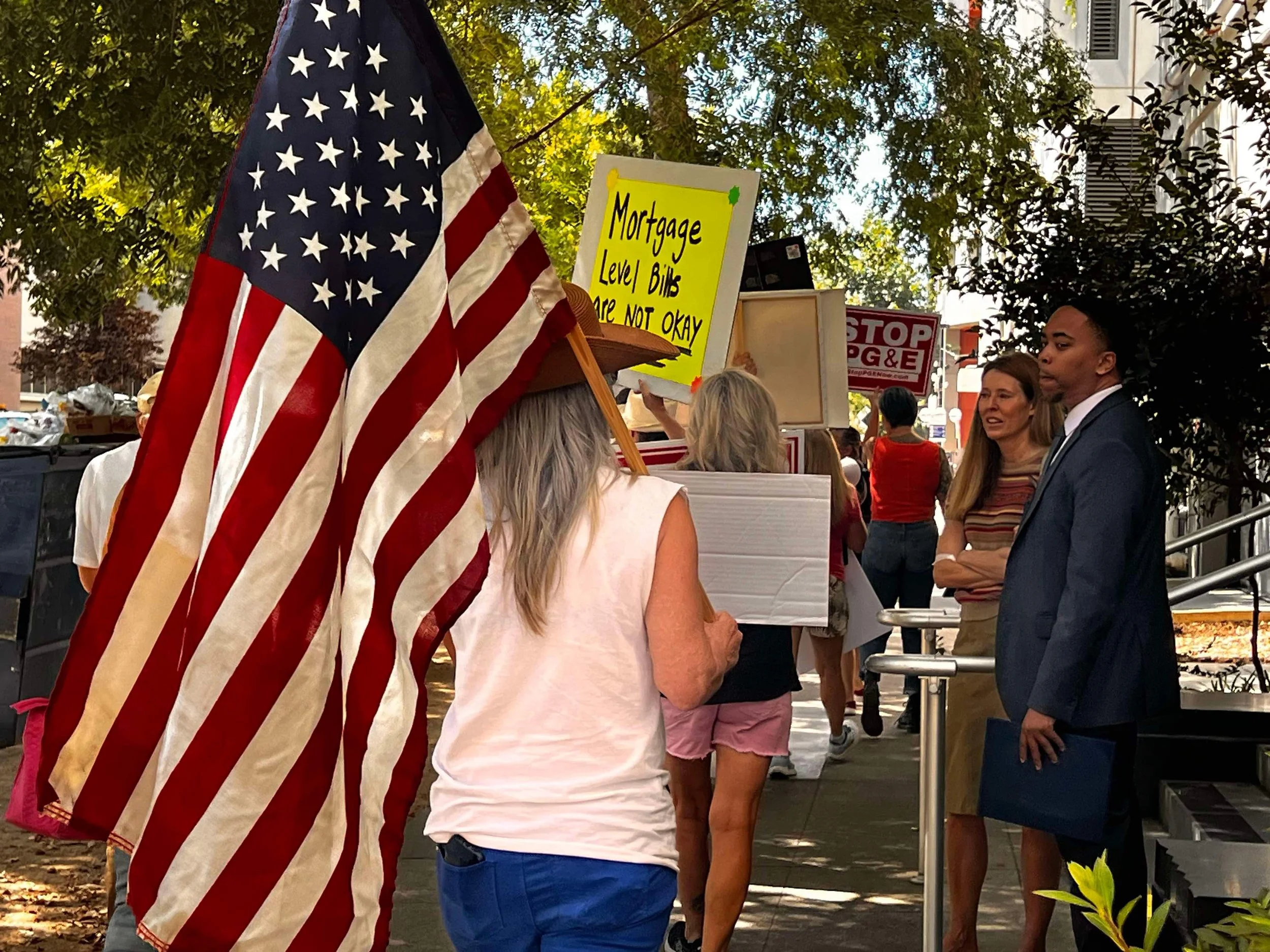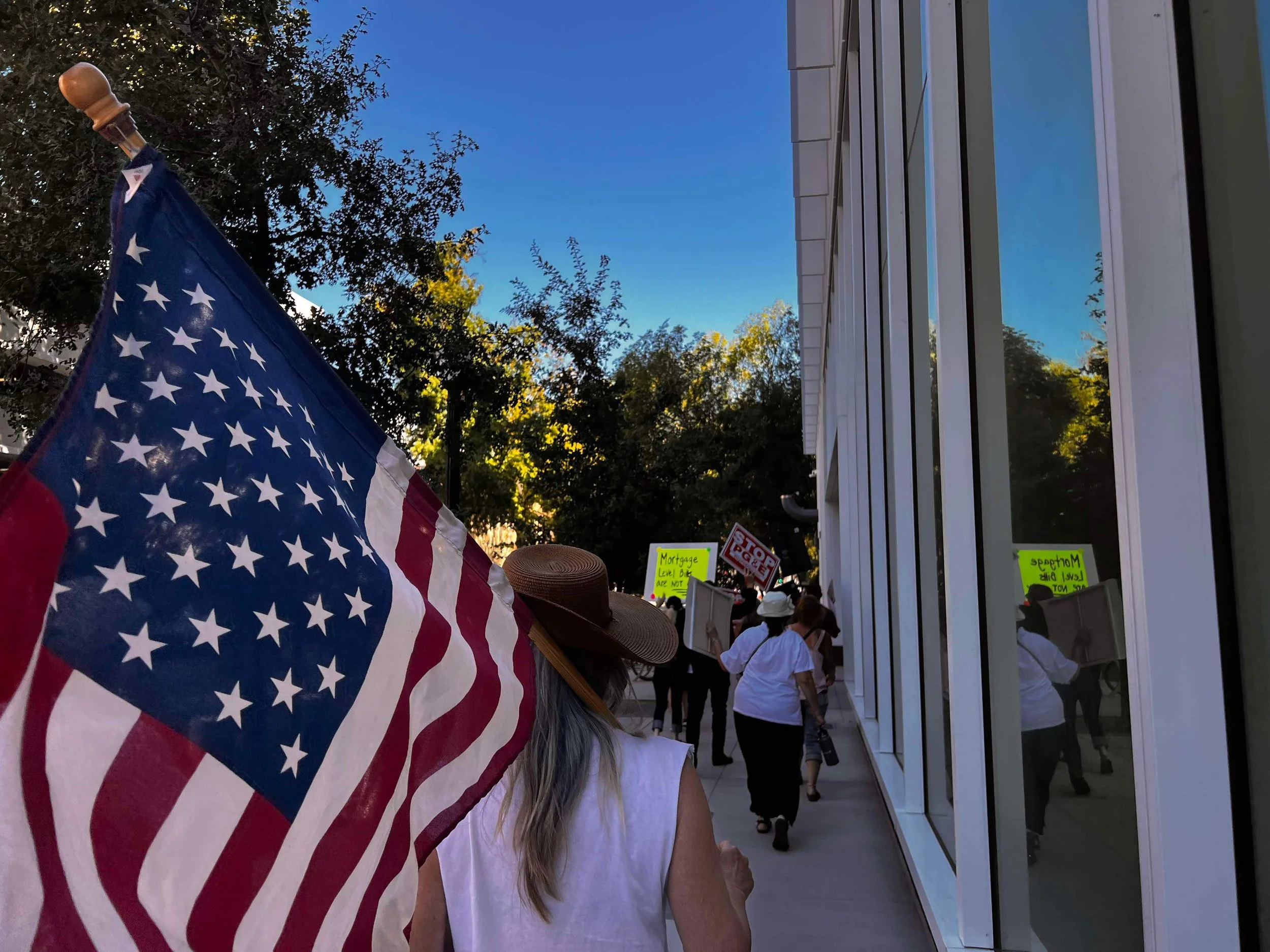WIRED FOR CORRUPTION
WIRED FOR CORRUPTION
THE PG&E CHRONICLES
Burying lines is not the answer….
Why Burying Power Lines Isn’t the Answer: The Case for Insulated Lines and Advanced Technology in Fire-Prone Areas
As communities across California grapple with the escalating threat of wildfires, the topic of how to safeguard our electrical grid has become urgent. One solution often proposed by Pacific Gas & Electric (PG&E) is burying power lines. While this option may seem appealing at first glance, especially for those living in fire-prone regions, it’s not necessarily the best approach. PG&E’s CEO, Patti Poppe, has pushed for an alternative view, claiming that insulated lines are only 35% effective compared to burying lines. However, this claim requires closer scrutiny, especially when we consider the long-term costs, feasibility, and modern technological solutions available.
The False Promise of Burying Power Lines
Burying power lines is not a silver bullet, particularly in rural and mountainous areas where fire risk is high. While it’s true that underground lines eliminate the immediate risk of above-ground ignitions, they introduce new challenges:
1. High Costs: Burying power lines is extraordinarily expensive, costing up to $3 million per mile or more in rugged terrain. These costs are ultimately passed on to ratepayers—already burdened by skyrocketing electricity bills.
2. Extended Maintenance and Repair Times: When underground lines are damaged, they are harder to access and repair, which can lead to longer power outages. In fire-prone regions where rapid response is essential, this creates additional risks during emergency situations.
3. Environmental Impact: Digging extensive trenches to bury power lines disrupts ecosystems, particularly in remote or forested areas. The construction process can exacerbate soil erosion, destabilize habitats, and increase environmental degradation—ironically worsening the risks that rural communities face.
Insulated Power Lines: A Smarter, More Effective Solution
Rather than relying on the outdated concept of underground lines, modern insulated power lines, coupled with advanced technology, offer a more practical and effective solution. Here’s why insulated lines, despite Patti Poppe’s claim of being only "35% effective," should be taken seriously as part of California’s fire prevention strategy:
4. Proven Effectiveness: Recent studies and real-world applications demonstrate that insulated lines significantly reduce the risk of fires sparked by electrical equipment. Insulated conductors are shielded from the elements, preventing the line-to-tree contact and arcing that commonly start wildfires.
5. Lower Costs and Faster Implementation: Installing insulated lines costs a fraction of what it takes to bury them. They are faster to deploy and easier to maintain, which means they can be rolled out across fire-prone areas more quickly—providing immediate relief to vulnerable communities.
6. Technological Innovations: In addition to insulation, PG&E and other utilities should be focusing on integrating advanced technologies like smart grids, real-time weather monitoring systems, and high-voltage detection equipment. These technologies can automatically de-energize lines when dangerous conditions are detected, further reducing fire risk.
7. Better for Rural Areas: In rural regions where fires spread rapidly due to high winds and dry conditions, insulated lines offer a crucial advantage. They require far less disruption to the environment and can be installed in more remote, hard-to-reach places where undergrounding would be impossible or prohibitively expensive.
Debunking the 35% Effectiveness Claim
Patti Poppe’s assertion that insulated lines are only 35% effective is misleading. First, this figure likely refers to limited test cases or older technologies. Modern insulation and advancements in conductor materials far surpass this number in real-world applications. Secondly, when combined with grid hardening and smart technology, insulated lines can be much more effective at preventing fire risk than simple percentage comparisons suggest.
Moreover, PG&E has a vested interest in pushing the undergrounding narrative. The high costs associated with underground lines may allow the utility to justify higher rates and seek public funding, all while shifting the blame for future outages or fires. Insulated lines and technology don’t come with the same exorbitant price tag, making them less attractive to a corporation that profits from capital investment.
Fire Prevention Needs Practical Solutions
The narrative that only burying power lines can protect us from wildfires plays on fear rather than addressing the facts. What Californians need is a practical, cost-effective, and sustainable solution that can be deployed swiftly. Insulated power lines, enhanced with smart technology, provide exactly that.
As our state faces the ongoing threat of wildfires, it’s essential not to let PG&E manipulate the discussion by offering emotionally driven but impractical solutions. We need to advocate for the integration of insulated lines and advanced monitoring technology as the most responsible path forward for fire-prone rural areas. The future of California’s grid depends on solutions that are affordable, scalable, and above all, effective.
By focusing on modern technology and real-world solutions, we can push back against PG&E’s costly and ineffective proposals—ensuring that communities stay safe without further draining their wallets.
Till next week…..
Wired for corruption - Alta community center event
PG&E recently hosted a public meeting at the Alta Community Center, just across the street from one of their office buildings. John Rabe, the political liaison for Stop PG&E, attended the event on behalf of the grassroots group, expecting a formal sit-down presentation. However, what he encountered was far from what he anticipated.
Upon arriving, John was warmly greeted at the door by County Board Supervisor Cindy Gustafson. She was engaging, welcoming attendees with genuine interest. Inside, instead of a traditional presentation, John found a room filled with about 20 different stations, each manned by two or three PG&E employees. It quickly became apparent to John that this wasn’t going to be a straightforward Q&A session.
As he made his way through the stations, John, armed with knowledge and ready to advocate for the community, posed pointed questions. At one station, he asked, “Why is PG&E focusing on undergrounding power lines instead of using insulated wiring with necessary safety infrastructure?”
The employee’s response was vague: “The CPUC ordered us to install 10,000 miles.”
John, not one to let things slide easily, pressed further. “Who told you that?”
“I’m not sure, but that’s the fact,” the employee stammered.
“Wasn’t that actually part of a plan that Patti Poppe put together?” John asked, referencing PG&E’s CEO.
“I don’t think so. It was ordered by the PUC,” the employee responded, clearly unsure.
It was obvious to John that the employee either didn’t know or was given incomplete information. Moving on, he asked about the cost of undergrounding. “What’s the cost per mile for undergrounding?”
The employee replied, “I think it’s around one million per mile.”
John knew better. “Really? Your company’s reports show the cost ranges between three and six million dollars per mile.”
The employee appeared confused and struggled to provide a clear answer, dismissing John’s correction without much confidence.
John continued through the event, engaging with different employees. When he asked about PG&E’s profits from undergrounding, he was told, “They don’t make a profit.”
John, armed with detailed research, corrected the statement: “Actually, the PUC allows for up to a 10% profit per mile.”
“Where did you hear that?” the employee asked, visibly uncomfortable.
“From the PUC and your own company documents,” John replied. But once again, the employee denied the information, highlighting the lack of knowledge or transparency among the staff.
At another station, John raised a critical point about safety. “Isn’t it cheaper and faster to install insulated lines? Wouldn’t they provide better safety coverage over more miles?”
One employee responded that while PG&E does use insulated lines in some areas, they were focused on undergrounding in Alta.
John followed up, “Why?”
“In the long run, it’s safer,” the employee explained.
“How much safer?” John pressed.
“Well, it’s hard to measure, but trees can fall on the lines and cause arcing,” the employee said.
“Really? How does that happen with insulated wiring?” John asked, knowing that insulated lines would prevent such incidents.
The employee hesitated, unsure of how to respond. John then brought up the fact that fast trip circuit trippers could shut down power in 1.3 seconds, preventing fires. The employee acknowledged that this technology was used, but the entire conversation left John unsatisfied.
John didn’t stop there. At another station, he asked about PG&E’s lobbying and advertising expenses. “Where does the six million dollars for lobbying and advertising come from?”
“All lobbying money comes from the stockholders,” the employee confidently replied.
John, however, knew the truth. “Actually, the entire six million comes from the Wildfire Safety Fund,” he corrected.
“That’s a lie,” the employee snapped, clearly irritated by John’s challenge. But John calmly explained that this information came directly from a Senate committee report. Despite the facts, the employee refused to acknowledge it, growing increasingly defensive.
Throughout the event, John encountered similar interactions—PG&E employees either lacked the necessary knowledge or were misinformed about critical details. He had expected a more data-driven, transparent discussion but found himself frustrated by the lack of preparedness from the staff.
The highlight of the event, however, was John’s interaction with Cindy Gustafson. Throughout the evening, Cindy had been engaging with John, asking thoughtful questions and taking notes as they spoke. She was genuinely interested in the issues he raised, even calling over her aide to take down John’s contact information to set up a follow-up meeting with the leadership team of Stop PG&E. Despite having to greet other attendees, Cindy kept returning to John to further their conversation, leaving him impressed by her commitment.
Before leaving, John made sure to thank Cindy for hosting the meeting and for taking the time to engage with him. Reflecting on the event, he realized that if a few more members of Stop PG&E had attended, wearing their T-shirts, the group’s presence would have been even more impactful.
John’s experience highlighted a critical issue: PG&E’s lack of transparency and the need for better-informed staff to address the community’s concerns. Despite the frustrations, his interactions with Cindy Gustafson gave him hope for future collaborations and efforts to hold PG&E accountable.
The sad story of SB938 bill
Wired for Corruption: The PG&E Chronicles
SB 938, the Utility Accountability Act, aimed to protect California's ratepayers by stopping investor-owned utilities from using customer funds for political lobbying and advertising. These utilities had been charging their customers for activities like lobbying legislators and running promotional ads disguised as public service messages. The bill, introduced by Senator Dave Min and co-authored by Senator Henry Stern, garnered widespread support from consumer advocacy groups who argued that such practices unfairly burdened Californians, driving up energy costs.
Despite the strong public backing, SB 938 faced heavy opposition from utilities such as PG&E and SoCalGas, as well as from labor unions. These entities lobbied against the bill, arguing that it would interfere with the utilities' operations. As a result, the bill failed to pass the Senate Energy, Utilities, and Communications Committee in April 2024. During the first hearing on April 16, it received 8 votes in favor and 4 against but did not pass. After reconsideration, it was brought back on April 22 with amendments, but once again failed, this time with 9 ayes and 3 noes.
Key supporters included Senators Becker, Durazo, Eggman, Gonzalez, Limón, Min, Skinner, and Stern—all Democrats. However, opposition came from Republican Senators Dahle, Grove, Seyarto, and Wilk. Six members, including Democrats Ashby, Bradford, Caballero, Dodd, Newman, and Rubio, chose not to vote, which contributed to the bill's defeat.
These abstentions and the intense lobbying efforts by utilities ultimately killed the bill, allowing utilities to continue passing the costs of lobbying and advertising onto ratepayers.
We will be reaching out to the key players on how we can get this bill moving again …….
Tune in next week for more


